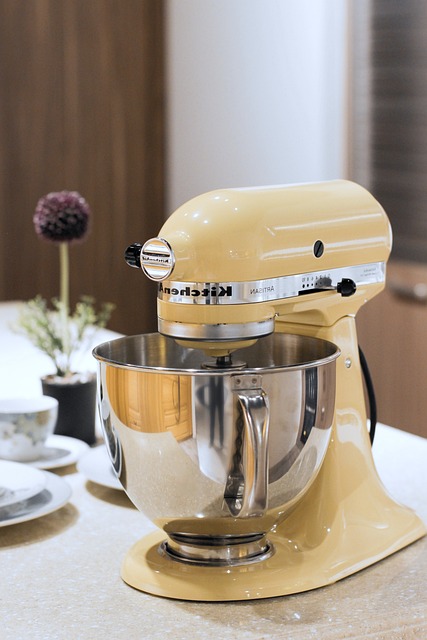Energy-efficient insulation is a cornerstone of modern kitchen design, offering cost savings and environmental benefits. Advanced materials like cellulose or foam insulations with high R-values prevent heat transfer, reducing utility bills and greenhouse gas emissions. Proper wall and floor insulation, combined with ventilation and double-glazed windows, significantly enhances energy performance. Selecting eco-friendly, moisture-resistant materials with high R-values ensures long-term efficiency. Strategic installation and area-specific considerations maintain optimal performance. Real-world applications demonstrate up to 30% energy savings, smaller carbon footprints, and lower utility bills for homeowners through effective energy-efficient kitchen design.
“Discover how energy-efficient insulation transforms your home into a beacon of sustainability and comfort. In today’s quest for eco-friendly living, understanding insulation goes beyond basic walls. Explore the benefits, from reduced energy bills to improved indoor air quality, in our comprehensive guide. We delve into various types suitable for walls and floors, helping you choose wisely. Learn key factors and installation tips to maximize efficiency. Real-world success stories highlight the impact on energy savings, offering insights for your own energy-efficient kitchen design journey.”
Understanding Energy-Efficient Insulation: Benefits for Your Home
Energy-efficient insulation is a crucial component in modern home design, particularly for those looking to create an eco-friendly and cost-effective living space. When considering your energy-efficient kitchen design, remember that proper insulation plays a vital role in maintaining optimal temperatures year-round. Benefits extend beyond savings on utility bills; efficient insulation also contributes to reduced greenhouse gas emissions by minimizing the energy required for heating and cooling.
By selecting materials with high R-values, such as cellulose or foam insulations, you can significantly improve your home’s energy efficiency. These advanced materials create a barrier that resists heat transfer, keeping your home comfortable while reducing the strain on HVAC systems. Moreover, energy-efficient insulation helps to regulate indoor air quality by preventing moisture buildup and reducing noise levels from exterior environments, ensuring a healthier and quieter living space in your kitchen and throughout your home.
Types of Insulation: Options for Walls and Floors
When considering energy-efficient insulation for walls and floors, there are several options available that can significantly enhance your home’s energy performance and contribute to an eco-friendly kitchen design. For walls, traditional choices include fiberglass, rockwool, or cellulose insulations. Each has unique properties; for instance, cellulose is known for its excellent compressibility, making it ideal for older homes with limited wall space. Fiberglass, on the other hand, offers high resistance to fire and moisture, while rockwool excels in extreme temperatures.
For floors, insulation options cater to different needs. Foam insulation boards are popular due to their high R-value, providing superior thermal resistance. These boards are especially useful for basement walls and floors, as well as new construction projects. Mineral wool and foam glass insulations are also viable choices, offering good soundproofing properties in addition to energy efficiency. For a comprehensive energy-efficient kitchen design, consider the interplay of these insulation types with other energy-saving features like proper ventilation and double-glazed windows.
Factors to Consider When Choosing Energy-Efficient Materials
When selecting insulation for your energy-efficient kitchen design, several key factors come into play. First and foremost, consider the R-value, which measures a material’s resistance to heat flow. A higher R-value indicates better insulation performance. Look for products with an R-value that suits your climate and specific installation areas, such as walls or floors.
Material type is another critical aspect. Opt for eco-friendly options like cellulose or fibreglass, which are not only efficient insulators but also sustainable choices. Additionally, ensure the chosen insulation can handle moisture and temperature fluctuations to maintain its effectiveness over time, contributing to a well-rounded energy-efficient kitchen design strategy.
Installation Tips for Optimal Performance
When installing energy-efficient insulation, especially in an energy-efficient kitchen design, pay close attention to details for optimal performance. Ensure all gaps and crevices are sealed properly to prevent air leaks, as even small openings can significantly reduce insulation effectiveness. Use quality installation materials and techniques, such as specialized tape and adhesive, to create a seamless barrier against heat transfer.
For walls and floors, consider the specific requirements of each area. For instance, in kitchens with high humidity, choose moisture-resistant insulation. Properly orient the insulation to take advantage of natural temperature flows – for example, placing it on outer walls or under floors to enhance its insulating properties. Regular inspection and maintenance are also crucial; check for any signs of damage or deterioration over time to ensure continued energy efficiency.
Real-World Applications: Successful Cases of Energy Savings
In real-world applications, the adoption of energy-efficient insulation has led to significant energy savings in various settings, particularly in modern energy-efficient kitchen design. For instance, studies show that homes with well-insulated walls and floors experience a reduction in heating and cooling costs by up to 30%. This is achieved through minimizing heat transfer, keeping indoor temperatures more stable, and reducing the reliance on HVAC systems.
Successful cases include retrofitted older buildings where energy-efficient insulation was installed, resulting in notable improvements in energy efficiency. In new constructions, incorporating these materials from the design phase has demonstrated even greater benefits, contributing to smaller carbon footprints and lower utility bills for homeowners. These examples highlight the tangible impact of using such innovations, making them a smart choice for both environmental sustainability and financial savings.
When it comes to creating an energy-efficient home, choosing the right insulation is a game-changer. By selecting advanced materials for your walls and floors, you can significantly reduce heat transfer, resulting in lower energy bills and a greener footprint. As seen in successful real-world applications, implementing efficient kitchen design practices with optimal insulation can yield remarkable energy savings. Remember that the right decision today could lead to comfortable living conditions tomorrow while contributing to a sustainable future.
